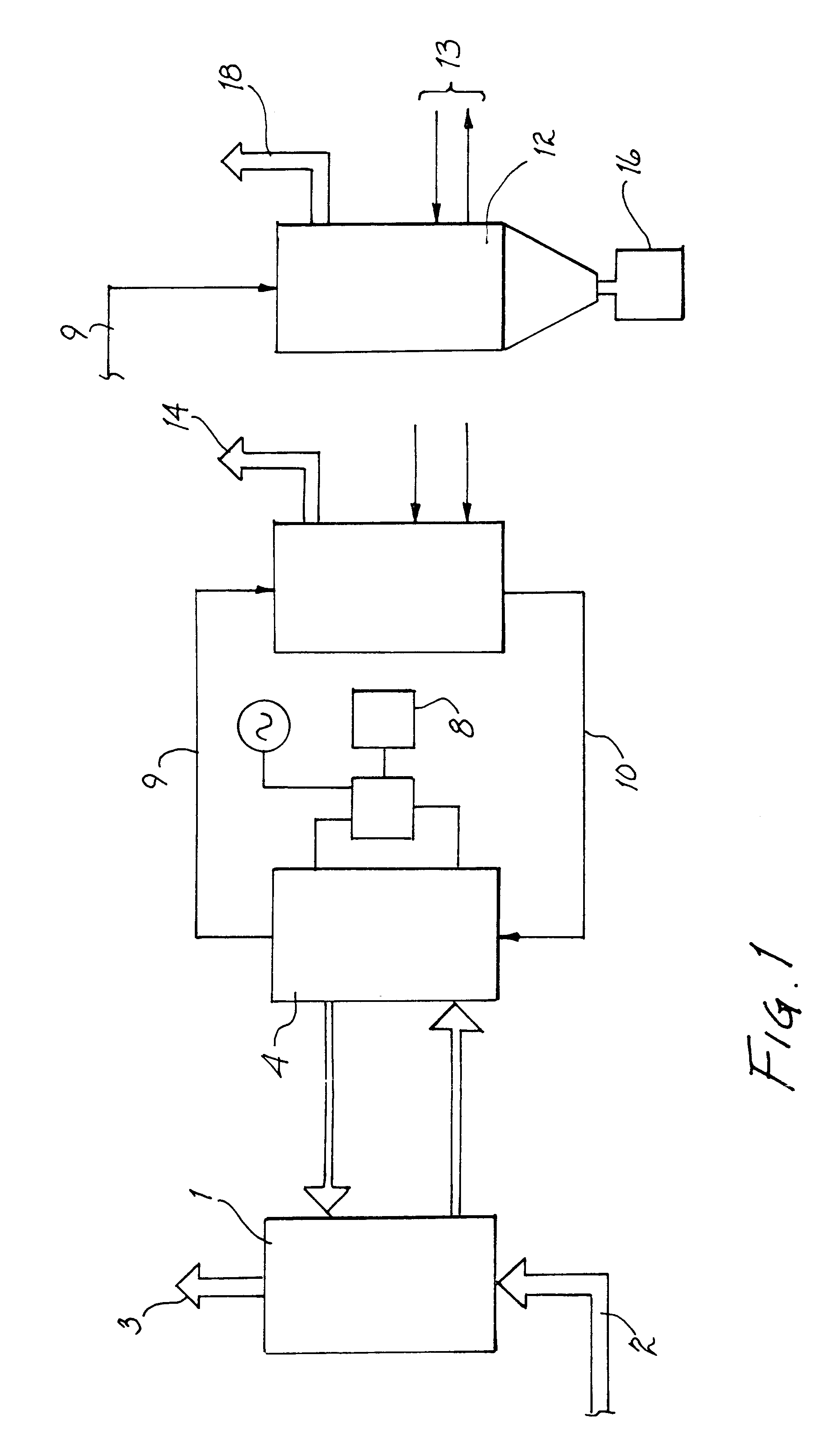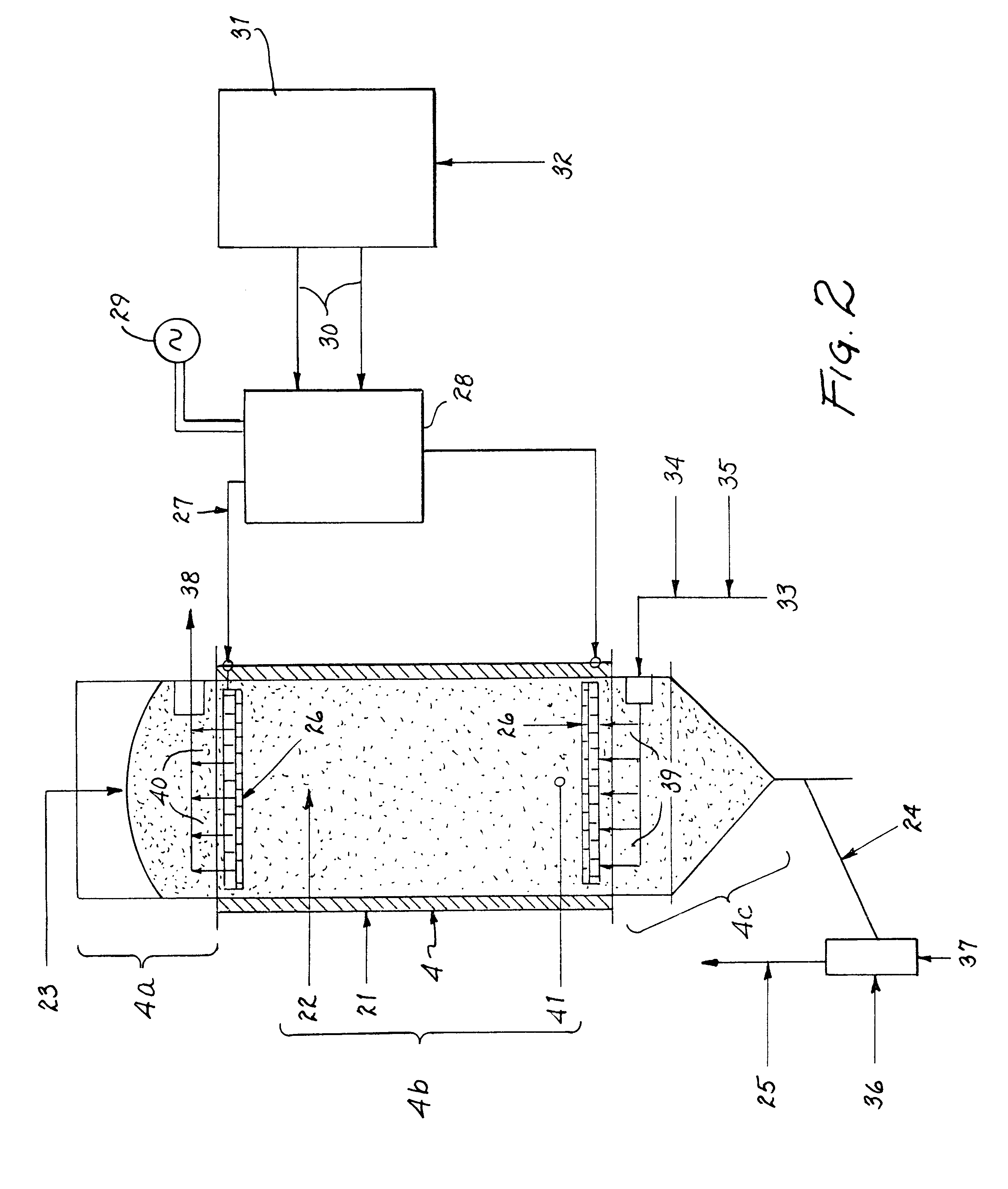VOC removal or destruction system
a technology of adsorption system and adsorption chamber, which is applied in the direction of combustible gas purification/modification, other chemical processes, separation processes, etc., can solve the problems of significant environmental hazards of airstreams incorporating volatile organic compounds, and reduced efficiency of adsorption materials, so as to avoid the opportunity for fire or explosion, enhance combustion efficiency, and high fuel content
- Summary
- Abstract
- Description
- Claims
- Application Information
AI Technical Summary
Benefits of technology
Problems solved by technology
Method used
Image
Examples
example 2
A continuous supply of contaminated adsorbent material in the form of activated carbon spheres was supplied to the top of a ceramic cylinder as described in Example 1. The programmable logic controller was adjusted to control the modulated power supply for maintaining a temperature of the moving mass within the ceramic cylinder to approximately 1,400.degree. F. As the mass of adsorbent material was moving downwardly through the ceramic tube, flue gas (the result of stoichiometric combustion) and steam was passed upwardly through the mass in a counter-flow relationship to the activated carbon beads. The result of the intimate contact of the heated carbon material with the carrier gas comprising the flue gas and steam stripped all adsorbed VOC's and as a result of the high temperature and presence of steam oxidized all carbonaceous material and restored the adsorbent pore structure. The effluent carrier gas (exiting flue gas stream and contaminates) was directed from the top of the cy...
example 3
A continuous quantity of contaminated adsorbent material was directed through an electrode into the interior of a cylindrical ceramic tube as described in Example 1. The mass of contaminated adsorbent material in the tube was heated through the action of current flow between electrodes positioned at the entrance and exit of the ceramic tube. The temperature was controlled and was maintained at approximately 500.degree. F. Flue gas (the product of a stoichiometric combustion) was directed in a counter-flow direction through the tube to contact the heated material and strip the contaminating adsorbed VOC's. The regenerated adsorbent material was continuously moved from the bottom of the tube and supplied to an adsorber for use in cleansing a contaminated air stream. The contaminated carrier air exiting the top of the ceramic tube contained the inert flue gas and the products of the stripping within the ceramic tube. That is, the exiting carrier gas was a fuel-rich gas containing the c...
example 4
The process of Example 3 was repeated except that the logic controller was programmed to control the modulated power supply such that the current flowing through the moving mass of contaminated adsorbent in the ceramic tube generated and maintained a temperature of approximately 1500.degree. F. The inert gas tapped from the stoichiometric combustion in the burner was passed through a heat exchanger for temperature control and steam was injected into this hot inert gas. The inert gas and steam was directed to the bottom of the heated ceramic tube to pass upwardly therethrough in a counter-flow direction with respect to the adsorbent material. The high temperature maintained within the ceramic tube and the presence of water vapor resulted in reactivation of the activated carbon adsorbent material. The effluent carrier gas was then collected and redirected back to the oxidizer for destruction of all contaminants stripped from the adsorbent material.
The use of a portion of stoichiometri...
PUM
| Property | Measurement | Unit |
|---|---|---|
| temperature | aaaaa | aaaaa |
| temperature | aaaaa | aaaaa |
| temperature | aaaaa | aaaaa |
Abstract
Description
Claims
Application Information
 Login to View More
Login to View More - R&D
- Intellectual Property
- Life Sciences
- Materials
- Tech Scout
- Unparalleled Data Quality
- Higher Quality Content
- 60% Fewer Hallucinations
Browse by: Latest US Patents, China's latest patents, Technical Efficacy Thesaurus, Application Domain, Technology Topic, Popular Technical Reports.
© 2025 PatSnap. All rights reserved.Legal|Privacy policy|Modern Slavery Act Transparency Statement|Sitemap|About US| Contact US: help@patsnap.com



